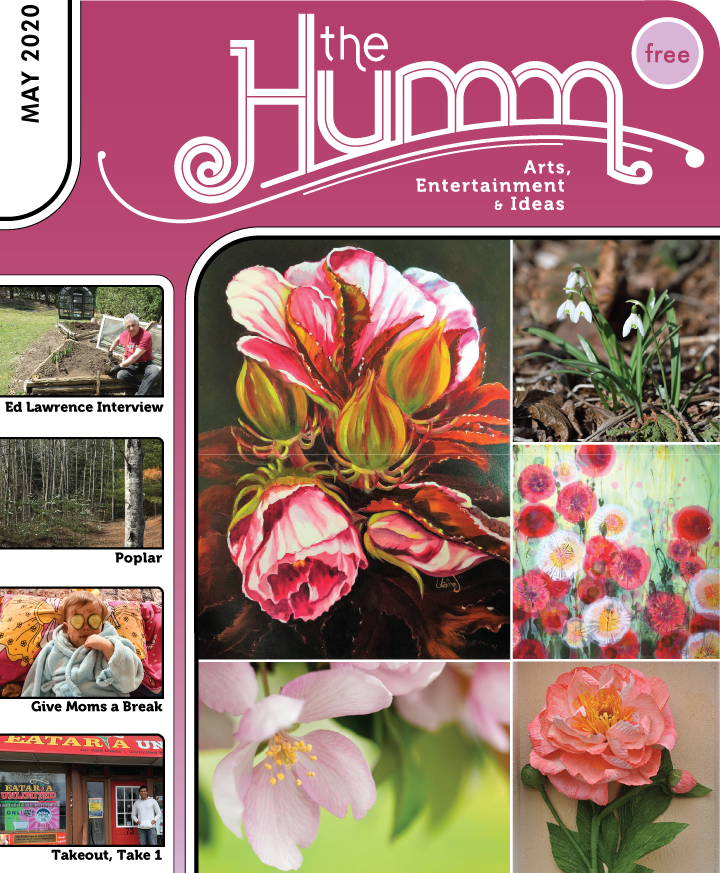Calling All Novice Vegetable Gardeners - theHumm May 2020
Calling All Novice Vegetable Gardeners - theHumm May 2020
By David Hinks
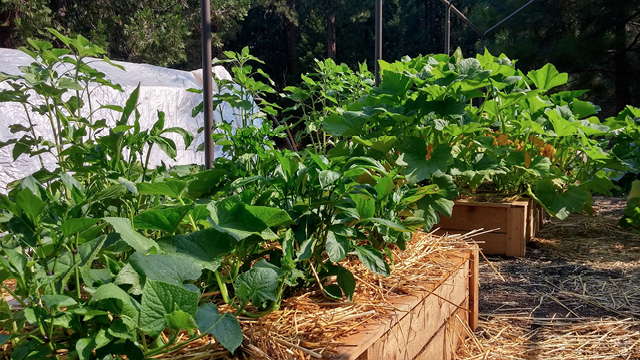
What is your reason for wanting to start a vegetable garden? You have found that grocery stores have lots of empty shelves? You fear that global supply chains are breaking down and trucks will not be able to cross the border? You’ve always wanted to try growing vegetables and now you have the time to try it? You’re desperately looking for a project to keep the kids busy?
The beauty of starting a vegetable garden is that there is no downside — even if there are no “dystopian-type” breakdowns in our food supply, what have you lost?
But where to start if you are a new gardener. The ideal would be to have been taught how to garden by parents and grandparents, but my experience in leading dozens of gardening workshops for keen young gardeners is that this knowledge has skipped a generation and many new gardeners can’t tell a rutabaga from a kohlrabi. The truth is that it requires a lot of experience and a lot of knowledge. Many techniques are learned only by trial and error over several seasons. But plants do just want to grow — if we look after the soil, water our plants, plant them at the right time and protect them from pests the results will be spectacular.
In the absence of multi-generational tutoring, there are many resources out there. But before you start surfing the web make sure the advice is suited for our area and is pitched to your level of knowledge. I highly recommend free introductory garden courses being offered by Ottawa not-for-profit Just Food JustFood.ca .
What Do I Need?
The recipe for a successful garden starts with three ingredients: sunshine, water and soil.
The first ingredient we must satisfy is sunlight. Most vegetables require a minimum of six hours of direct sun — this is afternoon sun — morning sun does not have enough energy for plants like tomatoes. Leafy greens such as lettuce can do with morning sun and would appreciate some shade from hot afternoon sun.
The second is soil. Perhaps you think that you don’t have room in your garden for a vegetable patch? Do you think that the vegetable patch should be hidden behind the garage? You might want to reconsider. If you don’t have a lot of land, think about large containers on your deck or balcony or consider getting rid of that front lawn.
There are many edible plants that are both healthy additions to your plate and a visual feast in the garden. They make great additions to flower beds or ornamental borders. I have had the most success with vegetables that form vigorous, well-shaped plants with interesting or attractive foliage or fruit and that continue growing strongly through the summer and into the fall. I plant them where I might otherwise put annual flowers. The most important growing requirement is a minimum of six hours of full sunlight.
Plants that I would recommend include peppers, eggplants, globe artichoke, Swiss chard, kale and basil. Basil forms a compact rounded plant in many shades of green and purple. Thai basil such as “Siam Queen” also has very decorative purple flowers. There are many herbs such as oregano, parsley, rosemary and thyme that form well-behaved small compact plants. They can easily fit into a small corner of a flower bed placed close to the kitchen door and handy for the gourmet cook. These are just a few of the ideas that have worked for me. Let your imagination run wild. Carrots have lovely ferny foliage; corn makes a bold statement — the possibilities are endless. Who knows — you may decide to stop growing flowers!
An absolute necessity for growing vegetables is accessibility of water. To the best of my knowledge xeriscaping with vegetables is not a possibility. We expect vegetables to be lush, juicy and sweet; not tough, stringy and bitter.
Most vegetables require a minimum of one inch of water a week. In the Ottawa Valley, rainfall averages about three inches a month and there can be lengthy periods with little or no rain. For example, in 2012 there was a drought of about ten weeks in mid-summer. Rain barrels may provide sufficient water for a small garden but anything more ambitious requires access to a more reliable source.
Creating the Physical Garden
There are obviously many different approaches to creating a garden with correspondingly very different implications for cost, size and attractiveness. Consider the advantages and disadvantages of boxes versus in-ground gardens.
The most obvious disadvantage of gardening in boxes is the much higher cost. Raised boxes are obviously critically necessary for gardeners in wheelchairs and with other mobility issues. They are also essential where there is very little space or where there is concern about contaminated soil. And with the raised box it is easier to control marauding rabbits and invading weeds. The boxes do have a limited life, and at some point will have to be replaced.
For both boxes and containers, the maxim that bigger is better is very true. Small containers dry out very quickly and the hapless gardener may have to water two or three times a day in hot, dry weather.
Other approaches are often touted as being much easier, such as lasagna gardening. Cardboard is placed on the lawn and then covered with layers of soil and mulch. There are certainly places where this approach will work, but in a garden of any size it involves purchasing and handling huge volumes of materials.
In a large area, it may be possible to use a tractor or rototiller to prepare the soil. A smaller garden may be created by hand — stripping the sod, setting it aside to compost, adding some compost or well-rotted manure and then mixing it (hard work but very low-cost if you are able to do it yourself). Raised beds and well drained soil assist an early start by warming up much faster. Raised beds don’t need to involve a lot of work. I create beds a little over a metre wide and about three metres long with pathways about half a metre wide. Just scoop the soil from the pathways onto the raised bed, add some compost, mix it up a bit and you’re ready to plant. You can make it much fancier with cedar planks as edging, particularly if you want to raise it more than a few inches.
It is important to know what types of weeds you are digging out when you are preparing your planting beds. Some, like dandelions, have a long tap root – if you are able to get the whole root the plant will not come back; however, any piece of root left in the ground will regenerate. Perennial grasses are difficult to eliminate as they have long horizontal roots that may stretch half a metre or more. These are best removed with a spading fork. A rototiller will break those roots into little pieces, every one of which will send up a new plant.
So which way to establish a garden is best? My conclusion is that it is very much dependent on the particular situation, the size of the garden and your physical capabilities.
The Garden Calendar
It is almost impossible to overstate the importance of trying to match the growing requirements of plants with the expected weather conditions in the growing season.
No, Victoria Day is not sacred. In fact, long before Victoria Day over half of my vegetable garden is planted. By then I am even harvesting and eating some of the early crops, such as lettuce, radish and spinach.
The Victoria Day rule for planting the garden in our area is still an important rule for heat-loving and frost-sensitive plants such as peppers, eggplant, basil, pumpkins, melons and cucumbers. However, there are a large number of vegetables that can be planted in the garden as early as the first week of April. Some years I have planted peas, onions, lettuce and spinach as early as the last week of March. Within our yards, the spot where the snow melts first may well be a favourable micro-climate and a great spot for a super-early start.
An early start is essential for plants that do not tolerate heat. Our Ottawa Valley spring can be incredibly short, with snow still on the ground at the end of April and 30-degree temperatures by late May. Some plants such as peas, broccoli, cabbage and turnip grow quickly in cool temperatures and practically stop growing in the heat of the summer. Lettuce and spinach will “bolt” — that is, produce flowers when temperatures climb above 20C, resulting in bitter unpalatable leaves.
Onions and garlic are a special case. They need cool weather to produce the foliage which will provide the energy for the bulbs that start forming when day length begins to shorten in late June. Garlic is very hardy and I plant it in late October for the next year’s crop – it emerges in mid-April and grows rapidly in cooler weather.
Onion “sets” are available very early in many retail stores. These are one-year old onions that have been grown under controlled conditions. They will grow into sizable onions for harvest towards the end of August. While it is possible to grow onions from seed, they would have to have been planted indoors in February. In the case of my main onion crop for storage onions I usually opt for the ease of sets — these are the simplest and most dependable method. For their early growth onions prefer cool weather conditions and plenty of moisture.
Frost-hardy vegetables such as lettuce, onions, peas and spinach can be planted outdoors as soon as the ground can be worked, often by mid-April in the Ottawa Valley. Semi-frost-hardy vegetables such as beets, carrots, chard and potatoes are best planted in late April or early May as they germinate slowly in cold soil.
So, what happens if the weather turns really nasty? One year I had peas that were about 10cm high when we had a late snowfall of 20cm. Once the snow was melted the peas were still growing with no problem. I have had potato foliage frozen to ground level — it didn’t take them long to spring back with fresh growth from the tubers. Onions and spinach take frost in their stride.
Some plants that we grow in the vegetable garden are very hardy perennials. In particular, both rhubarb and asparagus will thrive in the garden for 20 or 30 years or more if the planting bed is well prepared, if the plants are given some time to get established (with asparagus this may take three years), if some compost is worked in around the plants in the spring, and if you are able to keep perennial weeds such as grasses and thistles from getting established.
Most herbs can be treated as hardy vegetables — oregano, mint, lovage, dill, chives, sage, tarragon and thyme are some examples. The exceptions are rosemary (which is a perennial but must be brought indoors in winter) and sweet basil (which is extremely sensitive to cold and is best started indoors from seed in April or grown from seedlings purchased from a garden centre). At the least hint of cold weather in September basil leaves turn black and start to fall off.
Some gardeners try to get a head start on the season with relatively tender plants such as tomatoes. I may plant a few tomatoes two or three weeks before Victoria Day but I spread my risks by planting the main crop when it is warmer.
Raised beds and well-drained soil assist an early start by warming up much faster. In order to determine if soil is workable, take a handful and squeeze — if it stays together in a ball it is still too wet; if it crumbles it is ready. Time to get out and get planting!
Starting Seedlings Indoors
While May is getting pretty late to start most seedlings indoors, the first of May is feasible for fast-growing vine crops such as cucumbers and squash and for heat-loving basil — get in a bit of practice before “upping the ante” next year!
The key to growing seedlings successfully indoors is lots of light. If plants don’t have enough light, they will be spindly and weak and will not be able to handle the transition to outdoor conditions. Even a very sunny window is unlikely to provide sufficient light given the number of cloudy days in winter; hence it is preferable to start seedlings under artificial light. It is also likely to get very cool at night close to the window.
The set-up does not need to be fancy. I use utility wooden shelving and suspend fluorescent fixtures by chains between the shelves so that I can adjust them to keep them within a couple of inches of the seedlings. Used fluorescent fixtures are available for next to nothing at garage sales. I use only the cheapest four-foot fluorescent tubes as my results have been just as good as using special “grow” tubes.
I turn on the lights first thing in the morning and turn them off when I go to bed. I water only when the growing medium is dry to the touch but before the seedlings wilt, and drain off any excess water that has not been absorbed in a couple of hours — watering from the bottom is preferable.
Seeds contain all the nutrients required for germination. I use a diluted organic fish-based fertilizer weekly after seedlings have been growing for a few weeks.
Seedlings are very vulnerable to certain kinds of viral diseases, commonly called “damping –off”. Seedlings that appear healthy topple over from the base and die. I have found that this is virtually eliminated by using a commercial soil-less mixture and new plastic inserts and by ensuring good air circulation by keeping a fan running constantly. The air movement also produces stronger, stockier plants.
It is very tempting, but it is important not to start too early. Tomatoes in particular can become very tall and difficult to keep healthy if grown too long under lights. The amount of time that seedlings can grow indoors before they become too large for indoor conditions varies considerably. Tomatoes only need six to eight weeks, peppers and eggplant eight to ten weeks, broccoli and cabbage five to eight weeks, onions and leeks ten to twelve weeks, geraniums twelve weeks and most annual bedding flowers from six to twelve weeks.
Several vegetables that I have tried starting early indoors and have found virtually no benefit include peas, corn and beans. Also, root vegetables such as beets and carrots do not transplant well. Peas can be planted directly in the ground probably by mid-April; carrots and beets by the first of May; and corn and beans close to Victoria Day.
Vine crops, such as cucumbers and melons, do not like to have their roots disturbed when they are transplanted into the garden, but they do benefit from an early start, so I plant them in pots that I can put the plant and its pot directly in the garden. I use a pot that is biodegradable and will break down over time as it lets the plant’s roots grow through the pot wall. There are three possibilities for pots that I am familiar with — peat pots, coir pots and Cow Pots. I have used peat pots very successfully in the past but some gardeners are opposed to them as they use a non-renewable resource. Coir pots are made of coconut husks — I have found that they did not break as much as I had hoped in the soil. Cow Pots are made from the composted solids of cow manure and indeed break down quickly in the garden.
One thing I do after planting the seeds is to maintain charts of what I have planted — both indoors and outdoors — at times I supplement this with labels but I find that these get lost, move or fade. No job is finished until the paperwork is done!
It is necessary to harden-off seedlings before planting them in the garden. They need to be given gradual exposure to outdoor conditions, an hour or two the first day, a few hours the second day until they are outdoors full time in a week or so. Transplanting outdoors is best done on a calm, cloudy day. As I plant these lush green growing plants into the garden, it always seems miraculous to me that just two or three months ago they started from small hard apparently lifeless objects.
Planting Outdoors
Don’t try to work the soil too early. In order to determine if soil is workable, take a handful and squeeze — if it stays together in a ball it is still too wet; if it crumbles it is ready. If it clings to your boots and shovel in great clumps wait a few more days.
To create a raised bed about a metre wide and three or so meters in length, I dig over the area and get rid of any weeds, then I dig out the pathways between the beds down about three or four inches, tossing that soil onto the beds on either side of the path, I then add some compost — some of my own and a bag of composted manure. I then mix it up a bit with a spading fork and am ready to plant. I use the back side of a steel rake (I could have used a hoe instead) to dig three parallel rows about 1cm deep. I then plant three rows, for example one row of a mesclun mix of a variety of greens, a row of carrots and a row of spinach, then draw the soil back over the seeds and tamp it down lightly with the bottom of the rake.
A technique that will make your life much easier is the use of mulch, particularly in the pathways between the growing beds. Hay or straw is most commonly used in this area. I generally use straw as I find that it has far fewer weed seeds than hay. Any seeds of oats, barley or wheat that germinate can be easily pulled by hand or dislodged with a cultivator as they are shallow-rooted. I apply a layer of 10–15cm which often approximates one “slice” in a bale of straw. By the way, I am talking about the old-fashioned bales of straw weighing 15–20kg — not the large round ones that can only be lifted by a tractor. The use of mulch also helps to reduce moisture loss. If I use the mulch on the growing beds amongst the plants it is best applied early for cool-loving plants such as broccoli, and later, once the soil has warmed up, for heat-lovers such as peppers. Plants such as tomatoes that require an even supply of moisture through the growing season especially benefit from mulch.
One concept that you may want to include in your gardening plans is that of crop rotation. This is an important control method for insects and disease, as many pests are specific to one type of plant and may over-winter in the soil. It also may help to avoid soil degradation as different crops use varying amounts of nutrients. For example, peas and beans may add nitrogen to the soil whereas most green leafy vegetables are high users of nitrogen. It is important to note that rotation plans have to apply to vegetable families, as members of the family are generally vulnerable to the same pests. For example, the Brassica family includes broccoli, cabbage, cauliflower and kohlrabi.
Another concept that is useful for vegetables such as beans and beets is succession planting. Rather than plant all of the beans at once, plant some every two weeks or so thus spreading out the harvest over an extended period. This can continue over the summer. The average bush bean takes about 50 days from seeding until harvest (beets take 55–60 days). Given that the weather will likely start to cool off considerably by mid-September, I will want to plant my last crop of beans around the first of August. This also creates the opportunity to have more than one harvest from the same plot of land — I will be putting my later plantings of beans and beets in areas where I have harvested lettuce, spinach, peas and early onions and potatoes.
Dealing with Pests and Disease
Organic practices start with garden design and layout. The front-line of pest deterrents includes cultural practices such as beneficial habitat, crop rotation, diverse inter-plantings, and various partitions (row covers, screened hoop houses and other insect barriers) to minimize pest problems.
Although many organically-derived broad-spectrum pesticides are condoned by the Canadian Organic Standard, try to avoid their use altogether. The goal is to create a balance where the “good guys” keep the “bad guys” in check. Cultured lady bugs and praying mantis, parasitic wasps and a naturally occurring soil bacterium can be used when required, as these have no adverse effect on the ecosystem. The best way to prevent pest and disease problems is to raise strong healthy plants by building soil organic matter and maintaining the integrity of the soil structure by making extensive use of green manures and green mulches, by practicing minimal till or shallow till farming and keeping the soil covered. Compost tea, disease resistant cultivars and partitioning or putting distance between patches of plants are all strategies to deal with the threat of disease.
— David Hinks is a Lanark Master Gardener and Garden Programs Coordinator at the Lanark County Food Bank
The Return of the Victory Garden: an Interview with Ed Lawrence - theHumm May 2020

theHumm is reaching out to members of our Ottawa Valley community to ask how they are finding ways to use their gifts in these challenging times. Today’s subject is Ed Lawrence, CBC Radio’s gardening guru. We emailed Ed to find out what he’s been up to, and what advice he has for novice gardeners who may want to try their hand at growing their own veggies this year.
theHumm: I imagine you have had fewer speaking engagements than usual this spring — what ha......
Poplar - theHumm May 2020
By Susie Osler
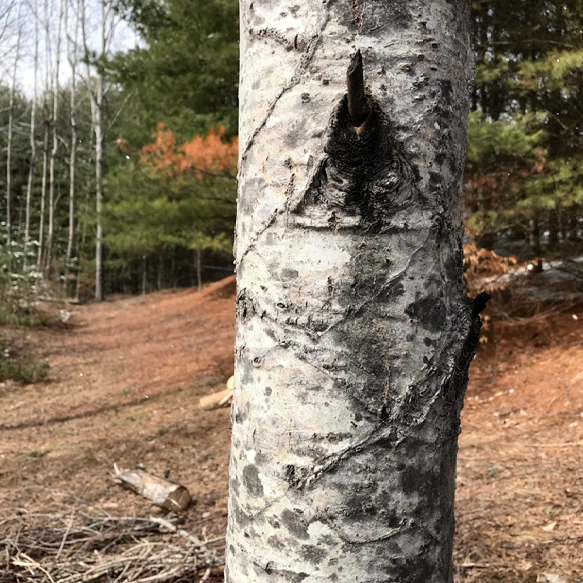
A Poplar round supports my weight. Its dying body lies here, sprawling in pieces around me. Rings of honey-coloured carbon circle in around dark, decaying heartwood that Woodpeckers have already begun to investigate in search of larvae. We sit here together, Poplar and I, on the tenuous, thin layer of unfolding life that is happening between our bodies and the eons of sand lying beneath us.
An accumulation of debris has fallen over decades — an offering to the Earth from the sanctuary of other Po......
The Great Veggie Grow-Off is a GO! - theHumm May 2020
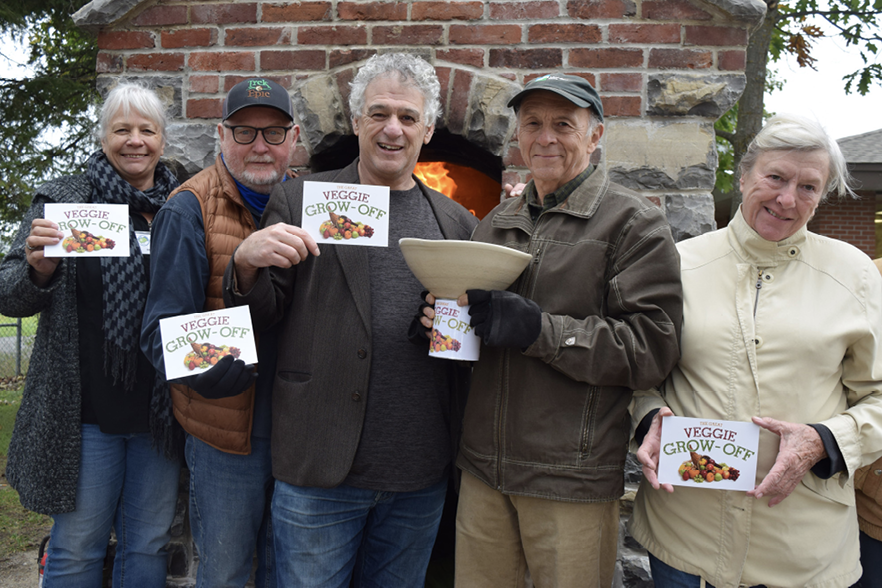
The Great Veggie Grow-Off, a project of the Neighbourhood Tomato Community Gardens, is an annual challenge between the nine communities of Lanark County and Smiths Falls to engage more citizens in growing healthy local food at home or in community garden beds — all with an eye to bolstering healthy food donations to our local food banks. This friendly challenge pits encourages communities to see which can grow the most food to donate, so the true winners each year are the food banks......
Calling All Novice Vegetable Gardeners - theHumm May 2020
By David Hinks

What is your reason for wanting to start a vegetable garden? You have found that grocery stores have lots of empty shelves? You fear that global supply chains are breaking down and trucks will not be able to cross the border? You’ve always wanted to try growing vegetables and now you have the time to try it? You’re desperately looking for a project to keep the kids busy?
The beauty of starting a vegetable garden is that there is no downside — even if there are no “dystopian-type” break......
Give Moms a (Coffee) Break! - theHumm May 2020
By Sarah Kerr

Well, to be honest, I didn’t think I had it in me. We recently moved back to the Valley from downtown Toronto, and while I saw all these amazing homeschool moms, and was often evangelized by them about how I should consider it, I always thought “bless your heart — but there’s no f-ing way I could do that without losing my mind!”
Six weeks into homeschooling, I have to say: I know myself well. My adrenaline is running out. I’ve tried ALL the coping mechanisms for my personality (Enneagram Type 7) ......
Playful May - theHumm May 2020
By Nicki Gallo

The first time I wrote a love letter to a stranger I felt giddy with secrecy and curiosity. “You are a unique and sparkly human. Thank you for shining your light.” I folded it up and left it on the back of the seat in front of me and got off at my stop.
The love note wasn’t directed at anyone in particular and I will never know if someone discovered that little mystery letter on the back of a train seat. And that’s ok. It was an experiment in play. The experience left me feeling vulner......
Reflecting on Earth Day 2020 - theHumm May 2020
By Rob Riendeau

As I write this, it is the 50th annual Earth Day. And as with most things these days, the distorting lens of the current pandemic is making me examine the day from an entirely new perspective.
Up to now, the challenges of respecting the Earth by minimizing our impact on the planet and our co-habitant species of plants and animals seemed impossible. Ideas and innovations died as soon as they were uttered, faced with the impracticality of getting from here to there. Grand announcements of bo......
Hygge Your Home! Turning Your Space into a Calming, Comfortable Sanctuary - theHumm May 2020

One morning a few weeks back I ordered a book from the wonderful indie bookstore two blocks from my home. I was feeling sad and scared, lonely and anxious. Books often calm my nerves. So I chose one I thought might bring me some comfort. By 5pm the book — The Little Book of Hygge by Meik Wiking — was in my mailbox and it was beautiful just to look at, the cover art joyful and comforting. I plunked down on my couch and began reading, in short spurts.
Page after page I was char......
The Best Gift - theHumm May 2020
By Glenda Jones

Ah, the allure of spring! The desire to drop everything and play hooky, leave all the “have-tos” and indulge in a “want to”, even if for only one afternoon when the sun is warm on your back, and all the winter wear is flapping on the clothes line. We’re supposed to feel guilty about doing this.
However, here we are in playing hooky mode, with days stretching out for who knows how long. Did we realize that we were being handed the gift of time without the necessity of guilt? For most......
Takeout, Take 1: Eataria Unlimited - theHumm May 2020
By Sebastian Weetabix

BC (Before Covid), Weetabix’ main topic was restaurants, many of which have been severely impacted by the necessary restrictions of social distancing. This is a gentle way of saying that forced changes to an established business model can be catastrophic. Our last article (and first in the time of social distancing) advocated ordering takeout but was short on specific recommendations. We will now start to address these and other related matters in the upper part of our food chain.
I......
Be Happy — Go Play in the Dirt! - theHumm May 2020
By Sally Hansen
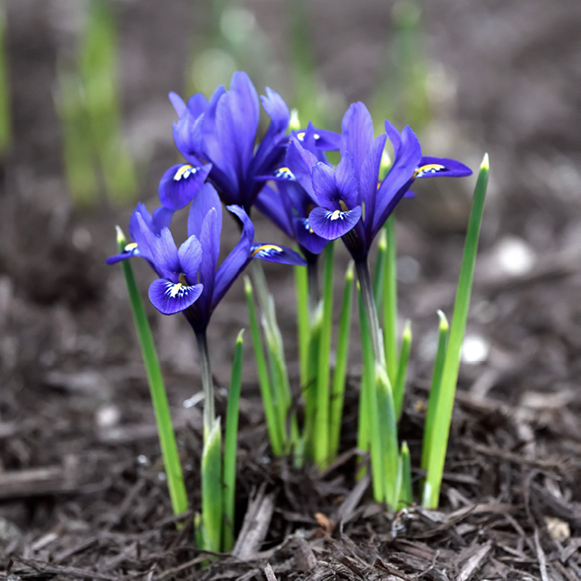
Dirt as an antidepressant? Ever since 2007 researchers continue to confirm that there is a natural antidepressant in soil. Ask any gardener – dirt makes you happy.
This is great news. Growing research suggests that simply playing in the dirt may provide some of the same benefits as Prozac or other pharmaceutical antidepressants, without side effects or the danger of chemical dependency. Microbes naturally found in soil consistently demonstrate a positive link with mammalian he......
What a Time to be a Travel Advisor! - theHumm May 2020
By Emma Moxley

March began like any normal month. I advertised in the community and theHumm that I would be presenting a “Let’s Talk Travel” seminar on March 31 at the local library with my partner from Royal Irish Tours. Snowbirds were already warm down South, and some were en route to long-term stays in Europe — Spain and Portugal being typical hotspots.
We had heard about an outbreak in China, something we would soon become all too familiar with called COVID-19. But we were far removed fr......
The Community Centre without Walls - theHumm May 2020

The North Lanark Community Health Centre (NLCHC) and PEP Seniors Therapeutic Centre (PEP) are teaming up to help area seniors, and adults living with disabilities, stay connected through a new telephone-based group programming venture called the “Community Centre Without Walls – Lanark County”. PEP and the NLCHC have a lot of experience in delivering in-person group programs for seniors. Collectively they have served hundreds of older adults and seniors each year through their programs, including the......
In the Wake of the Nova Scotia Murders A Call to Address Violence Against Women and Girls - theHumm May 2020

A number of Ontario anti-violence shelters and advocates are jointly calling on public officials to address violence against women and girls as the key inciting factor in the recent mass murders in Nova Scotia. The shelters, including Kingston Interval House, Lanark County Interval House and North York Women’s Shelter express deep condolences to all those affected. “We grieve this unimaginable tragedy alongside the entire country and know that healing will be long and painful.”
This weekend br......
COVID-19 Gives Us Grief Dealing with Ambiguous Losses - theHumm May 2020
By Barbara Carroll
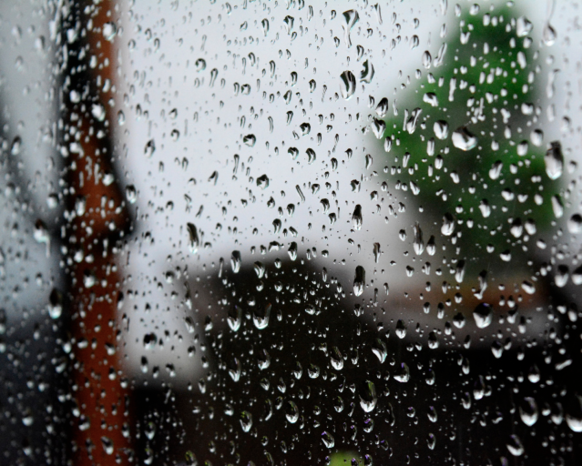
As we move through the COVID-19 pandemic we face multiple losses and experience the range of emotions of grief: anxiety, fear, sadness, despair, anger, loneliness, disappointment, hopelessness and regret. We each have our own losses, and we have all lost things such as peace of mind, freedom, independence, control over much of our lives, physical contact and a sense of safety. Well, we can say, COVID-19 is temporary and when it is over life will return to normal. That may be, but we are not there yet,......
Show MVFN What’s in Your Backyard this Spring! - theHumm May 2020

The Mississippi Valley Field Naturalists are launching a Lanark County backyard nature discovery project on iNaturalist. This will be a friendly challenge to see who can make the most observations of nature, find the most species, and engage the most people during the event. As an extra bonus, all the nature observation data that you post to iNaturalist contributes to the biodiversity record of Lanark County and citizen science in g......
CFUW 2020 Education Awards Application Deadline Extended to May 31 - theHumm May 2020
By the CFUW Perth and District Education Awards Committee
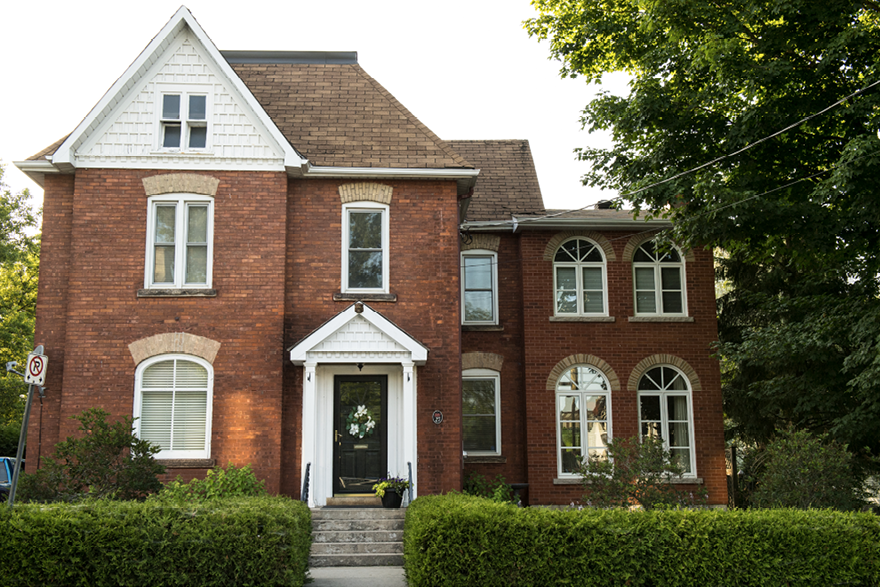
The Canadian Federation of University Women (CFUW) Perth and District is now inviting applications for financial assistance from women in our community who are pursuing post-secondary education. Eligibility is subject to acceptance in a recognized post-secondary program of study and is based on financial need. Applicants must reside in the region of Perth and District, but the educational institution can be anywhere in Canada.
In the rapidly evolving situation regarding COVID-19, CFUW ......
An Inspirational Escape - theHumm May 2020

The Rideau Lakes Artists Association’s annual Art show “Paint the Summer” has been cancelled this year due to COVID-19, so instead they will be hosting a virtual show/sale called “An Inspirational Escape”.
Starting in early May their talented and diverse artists will showcase their art on Facebook Facebook.com/RideauLakeartists and Instagram Instagram.com/rid......
Attention Students Interested in the Natural Environment - theHumm May 2020

The application deadline for the 2020 Cliff Bennett Nature Bursary Awards is Monday, June 1. The Mississippi Valley Field Naturalists (MVFN) are looking forward to awarding the annual Cliff Bennett Nature Bursary to the environmental leaders of tomorrow!
The MVFN is seeking graduating high school students who want to “make a difference” in meeting the environmental challenges of the future. The Cliff Bennett Nature Bursary is offered annually to assist students who will pursue ......
United by our Vulnerability - theHumm May 2020
By Helen Antebi
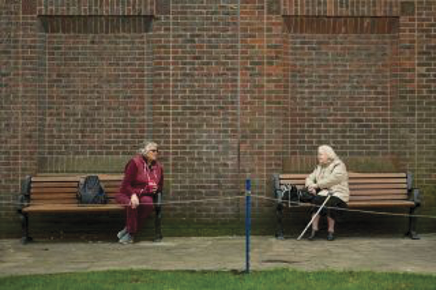
“Let this COVID-19 crisis be a lesson to us all in the power of collective vulnerability. We are witnessing and expressing large-scale humility, generosity and compassion most of us have not previously seen.”
This crisis of the virus has and should be a forever-lesson in vulnerability. If we have learned one thing we have in common in this time, it is that we all do not know. Our leaders do not know, parents, friends, siblings, peers do not know. We cannot answer definitively when this ......
On This Month’s Cover - theHumm May 2020
A veritable garden of art!
(clockwise from top left)
Claire Jacobs, clairejfineart.com
Sally Hansen, ...more
Dec 5 - 7 Chocolate Party
- Annie is On Her Way toCarleton Place Mississippi Mudds Bring Beloved Musical to the Stage
- Graham Mastersmith — Those Who Can, Do!
- We Lend a Hand The Forgotten Story of Ontario Farmerettes
- Local Talent Shines at Chautauqua Puppets Up! Presents a Diverse and Hilarious Variety Show
- 11th Anniversary Showat Sivarulrasa Gallery!
- JW-Jones at ABC Hall
- Reuse, Incineration, and Moving into the Modern Age
- History, Heritage,and a Global Spotlight Arnprior & McNab/Braeside Archivesto Host Volunteer Showcase
- Three-Fifty Squares at Carleton Place Gallery A Year of Firsts, A Season to Remember
- Merrickville Fine Arts and Christmas Show





